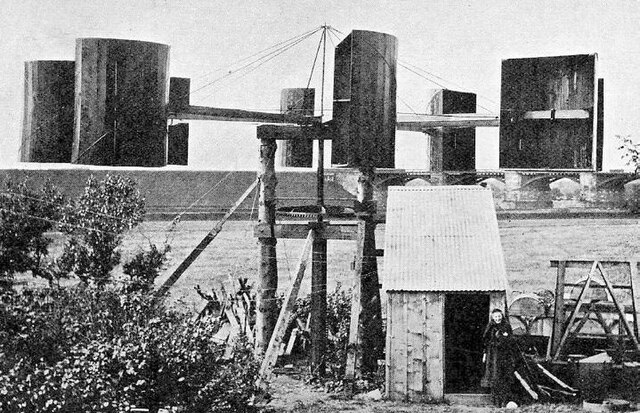Wind turbine design is the process of defining the form and configuration of a wind turbine to extract energy from the wind. An installation consists of the systems needed to capture the wind's energy, point the turbine into the wind, convert mechanical rotation into electrical power, and other systems to start, stop, and control the turbine.
An example of a wind turbine, this 3 bladed turbine is the classic design of modern wind turbines
Wind rotor profile
Machine Side Controller Design
2kW Dynamic braking resistor for small wind turbine.
A wind turbine is a device that converts the kinetic energy of wind into electrical energy. As of 2020, hundreds of thousands of large turbines, in installations known as wind farms, were generating over 650 gigawatts of power, with 60 GW added each year. Wind turbines are an increasingly important source of intermittent renewable energy, and are used in many countries to lower energy costs and reduce reliance on fossil fuels. One study claimed that, as of 2009, wind had the "lowest relative greenhouse gas emissions, the least water consumption demands and the most favorable social impacts" compared to photovoltaic, hydro, geothermal, coal and gas energy sources.
Thorntonbank Wind Farm, using 5 MW turbines REpower 5M in the North Sea off the coast of Belgium
Nashtifan wind turbines in Sistan, Iran
Illustration of the wind turbine for power generation erected by Josef Friedlaender at the International Electrical Exhibition in Vienna in 1883
James Blyth's electricity-generating wind turbine, photographed in 1891








